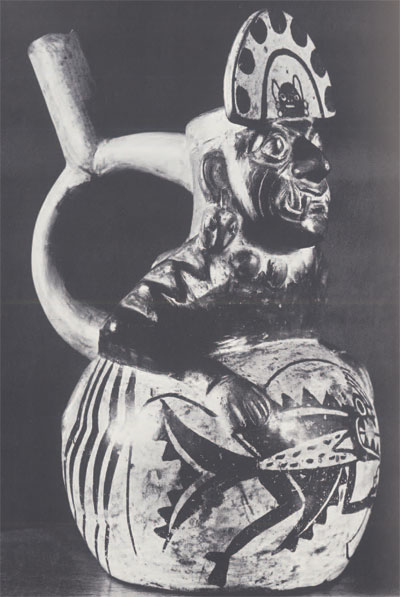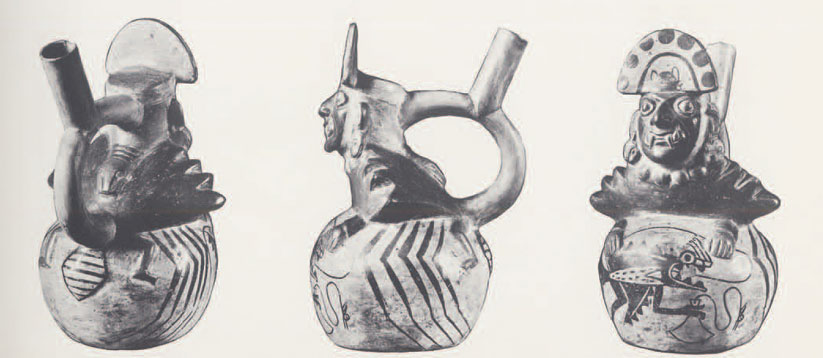 This modelled stirrup-spouted vessel, painted in dark red on cream, is the Museum’s most recent acquisition in the field of pre-Columbian Peruvian art. It was presented to us posthumously by Mrs. George Smith Patton, Jr. through her daughter, Mrs. James Totten.
This modelled stirrup-spouted vessel, painted in dark red on cream, is the Museum’s most recent acquisition in the field of pre-Columbian Peruvian art. It was presented to us posthumously by Mrs. George Smith Patton, Jr. through her daughter, Mrs. James Totten.
The Mochica people, who buried thousands of vessels of similar style with their dead, lived in the rich, irrigated valleys of northern coastal Peru in the early centuries of the Christian era. Their pottery is unequalled in the Americas in the realism and vigor if its depiction of every imaginable aspect of their material and spiritual world. Here is shown one of their favorite subjects, a supernatural being, perhaps their principal deity. He appears in many guises, but is always recognizable by his protruding fangs, attributes of the jaguar or the puma. In this case the feline motif is repeated as a small cat head painted on his headdress, but he is mainly in the form of a crab with human hands and small human legs in addition to his ten crab legs. Modelled serpent heads on his earrings and on the middle of his back add another element to this composite being, combining human, feline, crustacean, and serpentine attributes in a symbol of power that was of obviously great importance to the Mochica people.
The composite deity fishing with a hand line has caught the Fish Demon, an enemy with whom he is pictured in combat. The Fish Demon, like the fanged deity, has human limbs and always carries a large knife. This scene, and many others in which the fanged god confounds his demonic enemies, must have been the subject of a rich mythology, long since forgotten. The Mochica, however, have left us considerable more evidence of how they imagined their supernatural world than have most Indians from the archaeological past.

Photographs by: Reuben Goldberg
